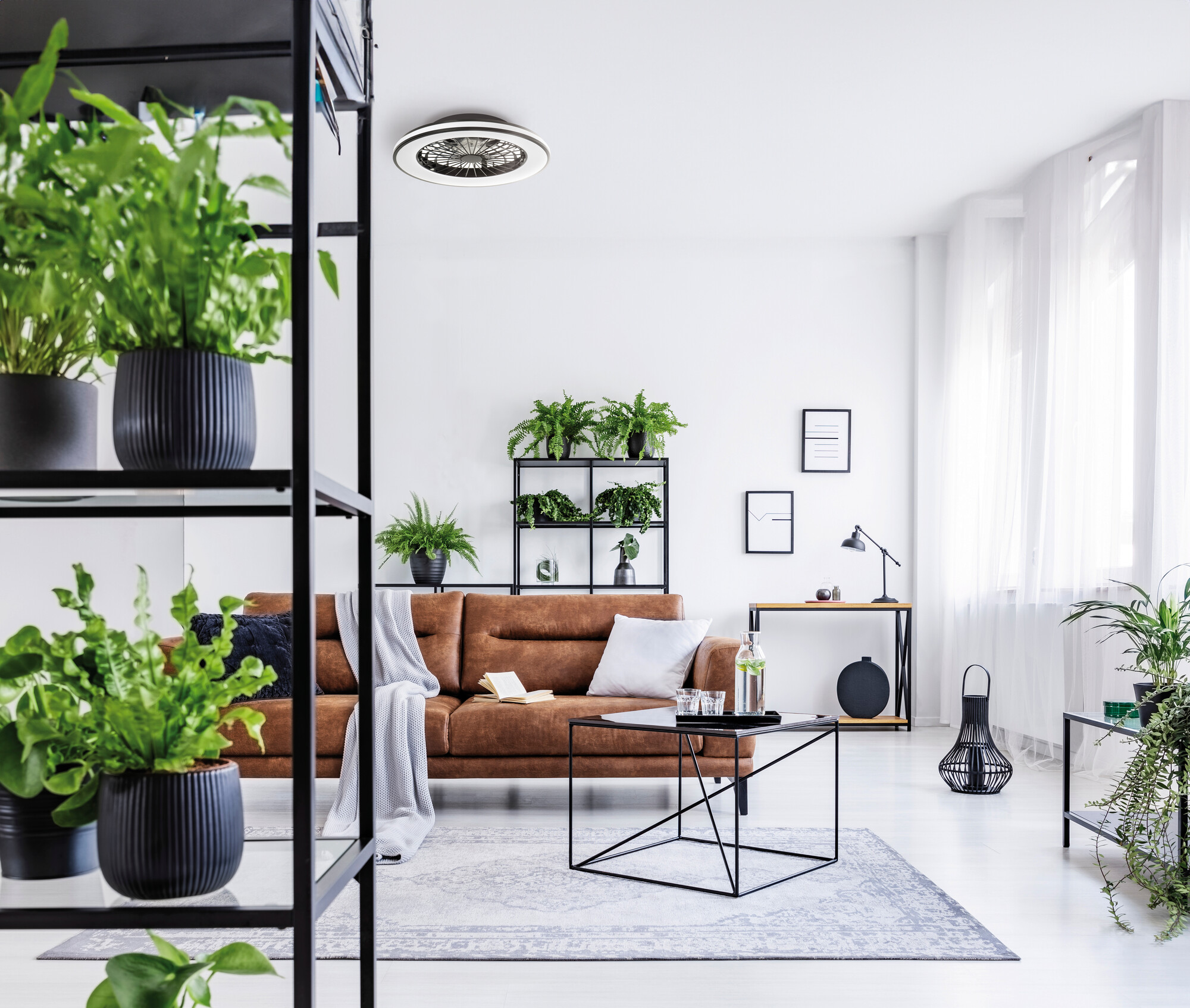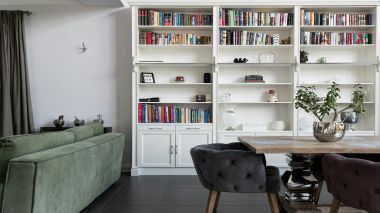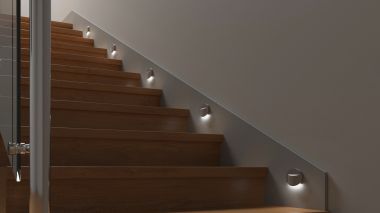Energy-efficient lighting: a beginner's guide
One of the simple yet effective ways to reduce household energy consumption is to use energy-efficient lighting. How do you implement changes at home? What are the best lamps and bulbs? Read our guide to learn more.

Check the functionality of lighting
How do you get started with energy-efficient lighting? First of all, check what lamps and bulbs you have at home. Each room has a different function and requires the right kind of light to maximally support the activities performed there.
For the office or kitchen, spot lighting directed towards the working area will work best. For the living room or bedroom, light with lower intensity but a wider beam angle covering the whole room will be a good choice. If you have south-facing windows, remember that you will need much less light in summer than in winter or autumn and consider choosing lamps with adjustable light intensity. The lower the intensity, the less energy the lamp uses.
Also, try using different light sources in the same room. A combination of ceiling and spot lighting will help you to create a multi-layered, functional and aesthetically pleasing lighting solution meeting all your needs and expectations. With such an approach, you can also use different light colours and intensities in one room. If you are working in the living room, switch on a desk lamp for work and a ceiling lamp for meals, and in the evening, while relaxing, switch on a wall-mounted luminaire with warm light of lower intensity to help you calm down and prepare for a night's rest.
Smart lighting
When talking about energy efficiency, it is also important to mention the functions of smart lighting. Motion and twilight sensors are some of the features that affect the final cost. Light intensity control can also be useful - in rooms such as a dining room, where a variety of lighting is needed - from bright during meals to soft during social gatherings. Kanlux Smart enables the creation of personalised scenarios and is compatible with Google and Alexa voice assistants. You can also go a step further and use Kanlux SMART sockets to automatically switch on or off appliances connected to them and check energy consumption. You may discover that your old fridge or washing machine is rocking your meter to the limit. With automation tailored to your lifestyle, you will save not only energy but also time, and you can control everything using your smartphone. Home life will definitely be more comfortable and convenient, therefore more enjoyable!
Opt for LED lighting
LED bulbs are the most popular choice when it comes to energy-efficient lighting. They use significantly less energy compared to traditional incandescent bulbs. This is because LEDs convert 90% of electricity directly into light and minimise energy loss. Traditional light bulbs worked exactly the opposite and a very large part of the energy was converted into heat. LEDs also have a long service life, up to 50,000 hours. To compare - traditional incandescent bulbs have a standard lifespan of up to 2,000 hours and fluorescent lamps - 10,000 hours. This means that for one LED, there are five fluorescent lamps and as many as 25 traditional light sources. When choosing lighting, it is worth taking into account not only the purchase price but also the operating costs. Although LEDs may be more expensive, this one-off purchase will quickly pay off. This makes LEDs not only financially beneficial but also environmentally friendly. They reduce energy consumption and greenhouse gas emissions.
Read also: Which LED lighting to choose?
Ensure energy efficiency
Energy efficiency is the ability to convert electricity into useful work with minimal energy loss. In the context of lamps and bulbs, energy efficiency means the amount of light (lumens) generated per unit of consumed energy (watts). Energy efficiency is given on labels and is measured using a scale from A (most energy efficient) to D (least energy efficient). For example, a 4 W LED bulb can emit the same amount of light as a traditional 60 W incandescent bulb. Kanlux XLED EX combines the characteristics of traditional incandescent bulbs in terms of appearance and a modern approach to energy efficiency, its energy efficiency class is A.
You will also often come across the concept of luminous efficacy, which you can calculate yourself very easily. If a bulb consumes 10W of energy and gives 500 lumens of light, its efficacy is 50lm/W (500:10 = 50). The efficacy of good LED sources should be at least 100lm/W. The exceptions are small or decorative light sources - such bulbs may give, e.g., 30lm/W. The already mentioned Kanlux XLED EX has a luminous efficacy of 210 lumens per watt.
Take care of your lighting - installation and maintenance
The effectiveness of lighting depends not only on the bulb but also on the proper installation and maintenance of lamps and bulbs. To ensure that they last a long time, they must be properly looked after. Dirt on luminaires can significantly reduce the amount of emitted light or efficacy and even lead to them burning out. Read our article on how to keep your lamps clean.
Remember to systematically remove dust from luminaires and bulbs. In most cases, using a dry, soft dusting cloth once a week is enough. Outdoor lighting require extra cleaning. You can replace the bulb yourself, but leave the installation of the lamps to professionals, do not do it yourself. A poorly installed lamp can cause bulbs to burn out, damage the luminaire or the installation or, in extreme cases, cause a fire. An energy-efficient lamp is a properly-working one.
Well-chosen and installed lighting can not only improve visual comfort but also make a significant contribution to energy saving by minimising waste and optimising the use of the light source.
Energy-efficient lighting is an investment that quickly pays off and guarantees lower energy bills and longer bulb life. By choosing LEDs, you not only take care of your wallet but also contribute to environmental protection. Remember to adjust the colour and intensity of the light to suit your needs and maintain your luminaires regularly to enjoy optimal lighting for years to come.
Other articles
 How to light your home library and reading space?
How to light your home library and reading space?
Reading is one of those activities that truly allows you to pause—to break away from everyday life...
 Lighting for Mezzanine Floors and High Spaces — Challenges and Solutions
Lighting for Mezzanine Floors and High Spaces — Challenges and Solutions
Not every space has the grandeur of a cathedral — and that is quite fortunate. Low interiors, mezzanine...
 Staircase and Corridor Lighting — Safety and Design
Staircase and Corridor Lighting — Safety and Design
Stairs, corridors and other passageways have specific lighting requirements. This is not only for safety...
 Smart lighting management in your home – where to start?
Smart lighting management in your home – where to start?
Smart lighting systems are not only a matter of convenience, but also a conscious step towards better...
 How does LED lighting work?
How does LED lighting work?
The LED lighting in our homes, offices and public areas is here to stay. Today, it is hard to imagine...
 How can lighting create a spa atmosphere in your bathroom?
How can lighting create a spa atmosphere in your bathroom?
When designing a bathroom, not only aesthetics but also lighting matter—when selected appropriately,...